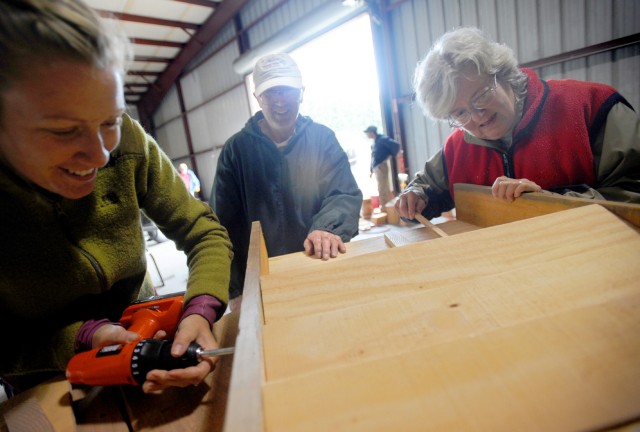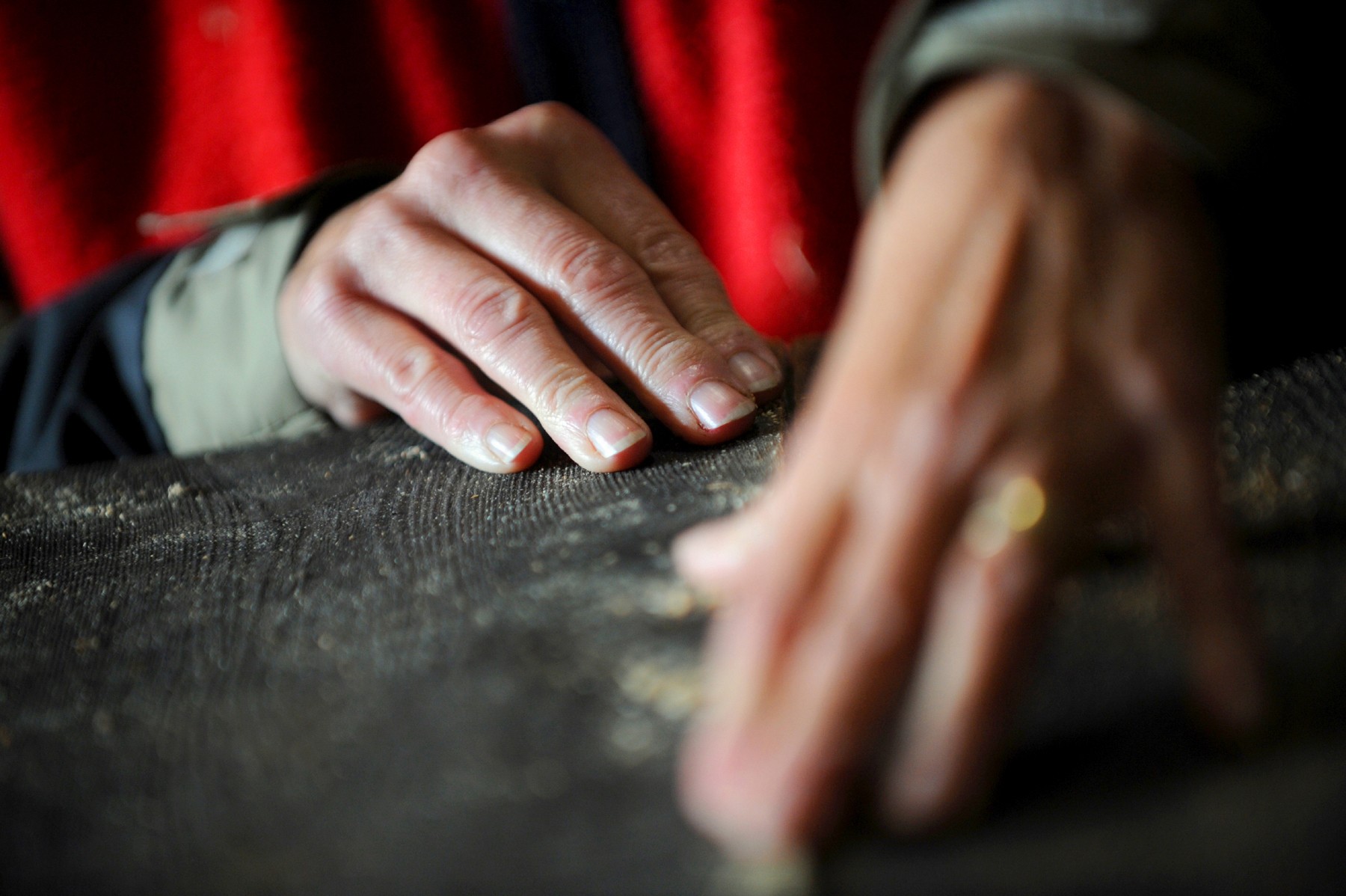FORT LEWIS, Wash. - A din of hammers, saw blades and drills came from a small army of employees and volunteers from Fort Lewis Fish and Wildlife and The Nature Conservancy who met at the Sequalitchew Creek EcoPark on Sept. 29 to construct bat and bee boxes.
The group transformed the old North Fort Chapel's 1940s-era steeple into a bat barn and built 11 bat boxes and 22 bee blocks in an effort to help encourage the post's bat and bee populations.
Several comments about 'bats filling the belfry' were made as the workers peeled multiple layers of shingles off the old steeple.
Greg Falxa, a bat ecologist with Cascadia Research, doesn't think bats are religious or crazy, but does believe there's a reason why they are drawn to church steeples and belfries.
"I think in general, this belfry, any belfry - is prominent," he said. "In the forest, (bats) go for structures typically set off on their own ... on the edge of the forest."
The shape of the steeple is ideal for bats seeking out maternity roosts where they can raise their brood.
"We believe (the shape) makes it easier to find and identify ... When the young learn to fly, they have a more obvious thing to come back to.
"Also, it will get more sun," he said.
Female bats that are nursing or pregnant need warmth to boost their metabolisms, Falxa said.
According to Nick Miller, a Fish and Wildlife biologist who supervised the crew, both bat and bee habitats in the area have declined because of logging practices over the last 100 years.
"Loggers' practices are getting away from it now, but (in the past) they didn't leave snags for any of the animals, and cavities are what's needed for nesting and roosting," he said.
Jim Lynch, a Fish and Wildlife biologist, said the bat boxes and bee blocks would be strategically placed on Fort Lewis prairie, oak woodlands and pine forests.
The bee boxes are designed for Mason bees and other pollinators whose populations are in decline.
Fort Lewis is home to nine of the state's 15 varieties of bats.
The gathering was a response to the 16th annual National Public Lands Day and a grant from the National Environmental Education Foundation.
National Public Lands Day is observed across the country and is one of the largest hands-on volunteer efforts aimed at improving and preserving public lands for future generations.
Michael and Marion Jarisch, of West Seattle, have spent the past 12 years volunteering once a week with The Nature Conservancy.
Marion Jarisch said the couple enjoys helping with restoration work on Fort Lewis' public lands and are impressed by the installation's efforts at furthering wildlife biodiversity.
"These are everybody's lands, and we should be taking care of our land. It's our heritage," she said.
Ingrid Barrentine is a reporter with Fort Lewis' Northwest Guardian.






Social Sharing